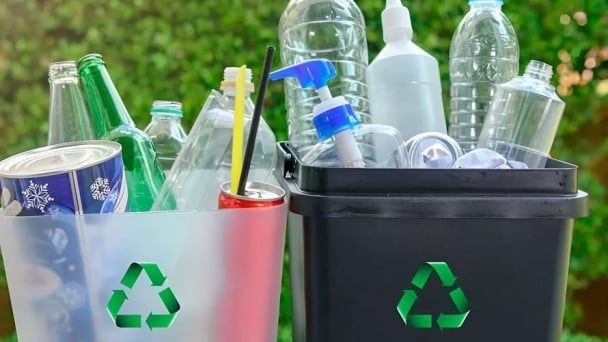May 19, 2025 | 08:02 GMT +7
May 19, 2025 | 08:02 GMT +7
Hotline: 0913.378.918
May 19, 2025 | 08:02 GMT +7
Hotline: 0913.378.918

Shrimp farming might leave a negative impact on the surrounding environment. Photo VAN
Statistics from the Department of Animal Health under the Ministry of Agriculture and Rural Development showed that the aquaculture area affected by pollution reached 41,980 ha, almost double that of the previous year.
Brackish water shrimp farming was the one that suffered the most with 39,000 ha.
More than 1,000ha of tra fish (pangasius) farming areas were also damaged, up 16 times compared to the same period last year.
It is reported that the area under shrimp farming in the Mekong Delta has expanded to 708,436 ha and organic pollution has been recorded in a number of provinces.
More than 621,540 ha are for breeding prawns and the rest for white-leg shrimp.
In Bac Lieu province, the area affected by organic pollution was 8,510 ha, an increase of 48.5 per cent over last year’s figure.
The province is striving to build itself into a centre of the shrimp industry in Vietnam.
By September this year, the area for brackish shrimp farming had risen to 130,905 ha. Most of them are for improved extensive shrimp farming.
According to Bac Lieu sub-department of Fisheries, hot weather and high salinity level were main reasons for organic pollution as they created favorable conditions for diseases to grow.
Shrimp farmers are to be blamed for shrimp die en mass in the northern region near National Highway 1A between March and May and in July and August, it said. They failed to treat the pond properly and were not proactive in securing enough water for farming.
Monitoring system
To deal with environmental issues, the sub-department has been implementing environmental monitoring systems in key shrimp farming areas of the province and the buffer zone of Vietnam-Australia Company based in Bac Lieu Province.
The surface water is sampled at 14 canals and 8 shrimp ponds. As many as 177 samples of water have been collected since March.
The test results have pointed out five out of 8 selected canals have chemical oxygen demand (COD), salinity, dissolved oxygen (DO) and Vibrio parahaemolyticus exceeded the permitted level.
The COD and Vibrio parahaemolyticus criteria were also above the allowed level, the sub-department said, adding that many parameters indicating organic pollution.
The Directorate of Fisheries (DoF) said environmental monitoring has been conducted at 37 sites in five provinces namely Ben Tre, Tra Vinh, Soc Trang, Bac Lieu and Ca Mau in the first 9 months of this year.
The Research Institute for Aquaculture No 2 was assigned to work with local authorities in carrying the work on brackish water shrimp farming.
The results revealed that indicators of organic and nutritional pollution such as ammonia, nitrite, phosphate, COD and microbiological parameters such as Vibrio parahaemolyticus are often higher than the permitted limits in Ca Mau and Bac Lieu provinces, the DoF said.
It occurred mostly between June and September, it added.
It is forecast that in the last months of this year, the Mekong Delta region will experience rain and floods more often and more storms are expected to enter the East Sea by the end of this year.
The DoF warned that during the rainy season, water flows from upstream together with waste from factories and households might leave a negative impact on the growth of aquaculture species.
The Mekong Delta is the largest shrimp hub of the country in terms of farming, processing and exporting.
Ca Mau Province boasts the largest farming area of shrimp in the delta with more than 280,000 hectares, accounting for forty per cent of the country’s total area.
Vietnam’s shrimp exports are forecast to reach US$3.7 billion this year, posting a year-on-year increase of 9.8 per cent, according to Vietnam Association of Seafood Exporters and Producers (VASEP).
The EU was the fourth largest shrimp export market of Vietnam, after the US, Japan and China. It accounted for 13.8 per cent of the country’s shrimp export value.
Despite declines at the start of this year, shrimp exports to the EU saw significant growth in the third quarter, thanks to the impact of the EVFTA which came into effect from the beginning of August, the association said.
In September alone, Vietnam exported shrimp worth $57.6 million to the EU, representing a rise of 35.4 per cent against September last year.
According to the Ministry of Industry and Trade’s Import-Export Department, Vietnam’s shrimp export would continue to increase in the last months of this year due to the low shrimp supply globally, especially from India.
Author: Sau Nghe. Translated by Ha Phuong. Edited by Duc Huy.

(VAN) The decree on Extended Producer Responsibility (EPR) ensures transparent management and disbursement of support funds, avoiding the creation of a “give-and-take” mechanism.

(VAN) Hue City rigorously enforces regulations regarding marine fishing and resource exploitation, with a particular emphasis on the monitoring of fishing vessels to prevent illegal, unreported, and unregulated (IUU) fishing.

(VAN) Hanoi People's Committee has issued a plan on reducing greenhouse gas emissions in the waste management sector with 2030 vision.

(VAN) Vietnam's draft amendment to Decree No. 156 proposes a mechanism for medicinal herb farming under forest canopies, linking economic development to population retention and the sustainable protection and development of forests.

(VAN) In reality, many craft village models combined with tourism in Son La have proven effective, bringing significant economic benefits to rural communities.

(VAN) The international conference titled Carbon Market: International experiences and recommendations for Vietnam was successfully held recently in Ho Chi Minh City.

(VAN) According to the Project on rearranging provincial and communal administrative units, in 2025, the country will have 34 provinces/cities, 3,321 communes, wards, and special zones, and no district-level organization.